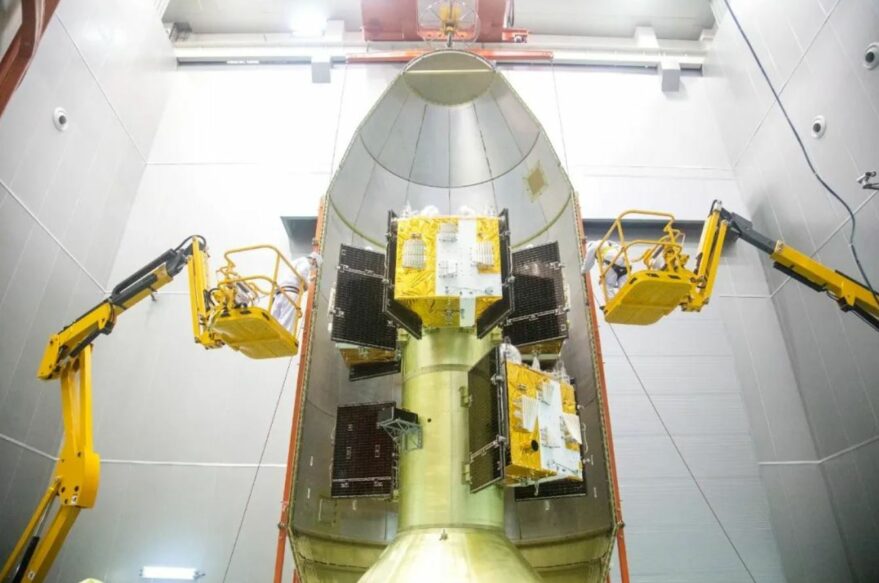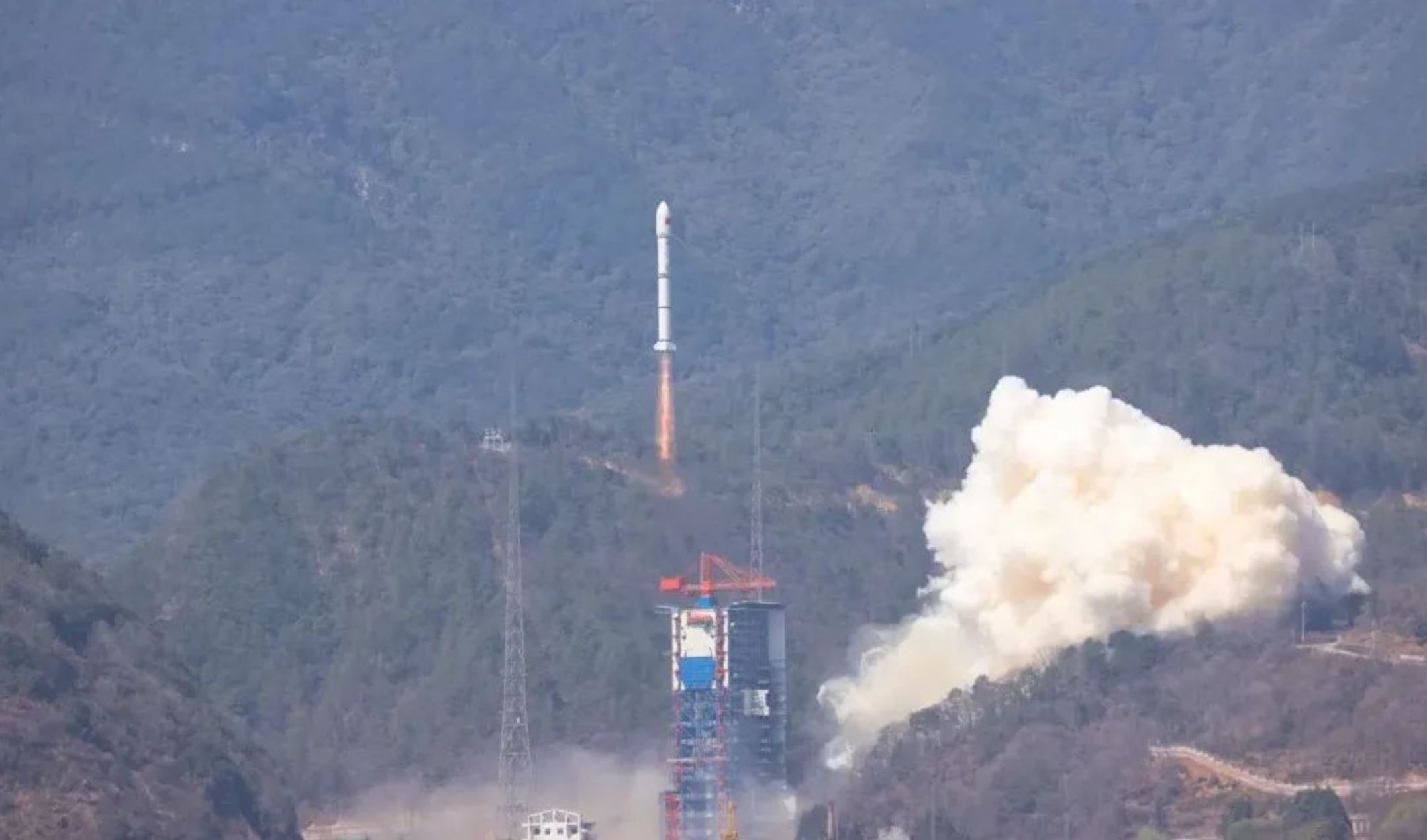Verification of satellites’ data and networking capabilities could lead to role in Chinese megaconstellation project.
HELSINKI — China launched a set of commercial satellites Saturday for testing broadband services, on-orbit networking and integrating communications and remote sensing technologies.
A Long March 2C lifted off from the Xichang Satellite Launch Center in southwest China at 1:01 a.m. March 5, carrying six satellites for private firm Galaxy Space and a further passenger in the Xingyuan-2 remote sensing satellite for startup SpaceWish.
U.S. space tracking later picked up seven objects from the launch in roughly 500 by 480-kilometer orbits inclined by 63 degrees.
The six satellites for private startup Galaxy Space are designated GS-2, GS-AP01, 02 and 03 and GS-2BP01 and 02, while also bearing secondary names through sponsorship. The experimental satellite network has been nicknamed “Mini-spider Constellation.”
Each satellite has a mass of 190 kilograms and are capable of data speeds of 40Gbps according to the firm, and are smaller and more capable than the Yinhe-1 satellite launched in 2020.
Notably the satellite could play an important part in the development of China’s plan to establish a national low Earth orbit broadband megaconstellation, overseen by a state-owned enterprise but apparently involving players from the country’s nascent commercial sector.
“These six satellites will form an experimental network integrating communication and remote sensing,” Chang Ming of Galaxy Space told CCTV.
“When the whole experimental network forms, it will be verified in various application scenarios. It will also be the first technical verification for China’s low-orbit broadband satellite constellation.”

Galaxy Space was founded in 2016 and had designs on establishing a private constellation of satellites, according to founder Xu Ming. Deng Zongquan, head of the National Defense Program 793 and the director of the mysterious “Aerospace Institutions and Control Technology at a National Defense Key Discipline Laboratory,” according to SupChina, was later recruited as chairperson of Galaxy Space’s technical committee, providing value links to the traditional space sector.
The private constellation plans appear to have been subsumed into China’s national broadband constellation plan. Verifying the performance of the new satellites in orbit along with its supply chains and mass-manufacturing capabilities could put it in position to make big contributions to the project.
However, little is known about China’s plans, which ITU filings reveal tentative ideas of a 13,000-strong constellation. The project could support a number of new companies in the launch and satellite sectors, which were opened up to private capital in 2014.
Galaxy Space established a satellite manufacturing factory in Nantong which it says can produce 300-500 satellites per year. The city, on the Yangtze river and near Shanghai, also hosts reusable rocket startup Deep Blue Aerospace.
The mission also included participation from Four Squares Technology and a 3D printed CubeSat deployer from COSATS.
The launch was China’s fifth of the year, with the China Aerospace Science and Technology Corporation (CASC) aiming for more than 50 launches in 2022. These include six major missions to complete the country’s space station.
